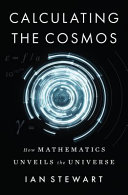2018 School Spending Survey Report
Calculating the Cosmos: How Mathematics Unveils the Universe
Basic. Oct. 2016. 336p. illus. notes. ISBN 9780465096107. $27.99; ebk. ISBN 9780465096114. SCI
COPY ISBN
VERDICT Highly recommended for science readers who are up for a challenge.
RELATED
ALREADY A SUBSCRIBER? LOG IN
We are currently offering this content for free. Sign up now to activate your personal profile, where you can save articles for future viewing




Comment Policy:
Comment should not be empty !!!